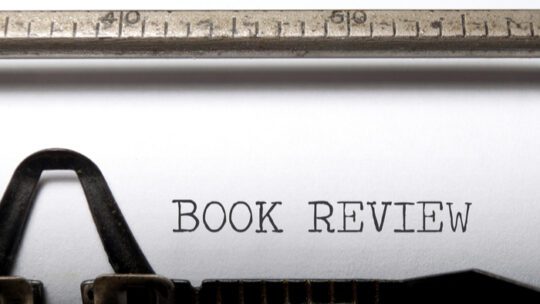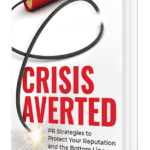
 Crisis Averted: PR Strategies to Protect Your Reputation and the Bottom Line,
Crisis Averted: PR Strategies to Protect Your Reputation and the Bottom Line,
By Evan Nierman
172 pp. Advantage. $29.99.
When you start a PR campaign, the first task is deciding on goals. It’s the same with book writing. And with so many titles about PR crisis available, an aspiring author must decide at the outset what revelation a new volume will provide.
While this short, introductory book from Evan Nierman contains mostly standard crisis advice, the novelty is whom he’s attempting to reach and how his insights are presented.
Many PR books address crises and situations at large companies, using examples from the headlines. The usual list includes Equifax, BP, Boeing, United Airlines, among others.
This book, though, seems aimed elsewhere. Its main beneficiaries are owners of small businesses, with limited or no background in PR or media relations. That’s a wide-open field in need of knowledge.
Crisis Preparation, Yes or No?
Thanks in part to the pandemic, more companies are taking crisis seriously.
Still, many corporate leaders dismiss crisis preparation and risk assessment as unnecessary. The ‘It will never happen to us’ syndrome persists despite a health crisis that touched nearly every person on the planet.
If large firms with considerable budgets pass on investing in crisis preparation and risk assessment, imagine the dilemma of small- and mid-size businesses owners.
As the pandemic highlighted, restaurants and cafes, private schools and hardware stores, among others, often operate with tissue-thin margins. Should some bad PR result in fewer customers and hence decreased revenue, these businesses, unlike large corporations, could close quickly.
As such, Nierman, founder of Red Banyan, a PR and crisis communication firm, begins the book with an example of a seemingly innocuous situation that, left unresolved, could have destroyed a small employer.
Most important, it’s an example local business owners will identify with, making a crisis seem as likely to occur on Main Street as on Wall Street.
Dance Crisis
The example involves a small Florida dance studio, which offers students bus service after school.
One day a young dance student falls asleep on a studio bus. Inadvertently, she’s left behind in the Florida heat. Fortunately, she awakens quickly. Finding the bus empty, she trudges, dehydrated, into the studio.
Staff tend to her immediately. They provide cold towels and water and call her mother. The young girl is fine, but her mother is not. She calls police and presses charges. The bus driver, a contract employee, is arrested on site.
On top of that, the mother phones local media. Social media is abuzz with concerned parents. A local news crew arrives in the studio’s parking lot. Not long after, a TV reporter calls the studio to say a story is set for the 5pm news. The studio owner googles ‘crisis communication’ and calls Nierman at 2pm.
This example doesn’t involve millions of dollars, shares of stock and thousands of jobs. Yet it fits firmly in the traditional definition of a PR crisis. With enough panicked parents pulling their children out of this ‘unsafe’ studio, the business would close. It could have spiraled into an existential situation.
The Response
Offering a step-by-step response that’s rarely detailed in crisis books, Nierman takes the reader through his process. After a quick fact-finding effort, Nierman determines the studio cares about its students’ safety. Its drivers are instructed to count students entering and exiting buses. In this case, the driver was at fault.
Next, Nierman calls the reporter. Speaking transparently, he explains this was an isolated incident, owns the bus driver’s mistake, describes the studio’s strong safety record and answers the reporter’s questions.
In addition, he handles all communication, instructing the studio owner, teachers and receptionist to refer media inquiries to him. A letter goes out to all parents. The studio head posts calmly on social, explaining what happened.
The story on that evening’s news is more of a report than a sensation.Equally important, parents rally around the studio. They realize, “‘It is not fair for you to get bad press, since you are caring people doing an incredible job creating a safe and nurturing environment for our kids....’”
While this example encapsulates many of the book’s takeaways–crisis preparation beats desperation, know how to handle traditional and social media, tell the truth, act quickly and don’t forget internal communication during a crisis–it also portrays the crisis pro as a hero, though Nierman writes that’s not his intent. Sometimes, though, Nierman leaves the opposite impression.
Still, his writing is clear and inviting, which is always important, even more so for a book about PR crisis aimed at busy business owners.
For crisis PR pros, the book can serve several purposes. First, recommend it to business owners who are undecided about investing in crisis preparation and risk assessment. Second, absorb its interesting examples and lively writing about crisis.
For instance, Nierman urges us to never tell the truth. Instead, “press the truth,” seize the initiative and make sure your story is heard.
